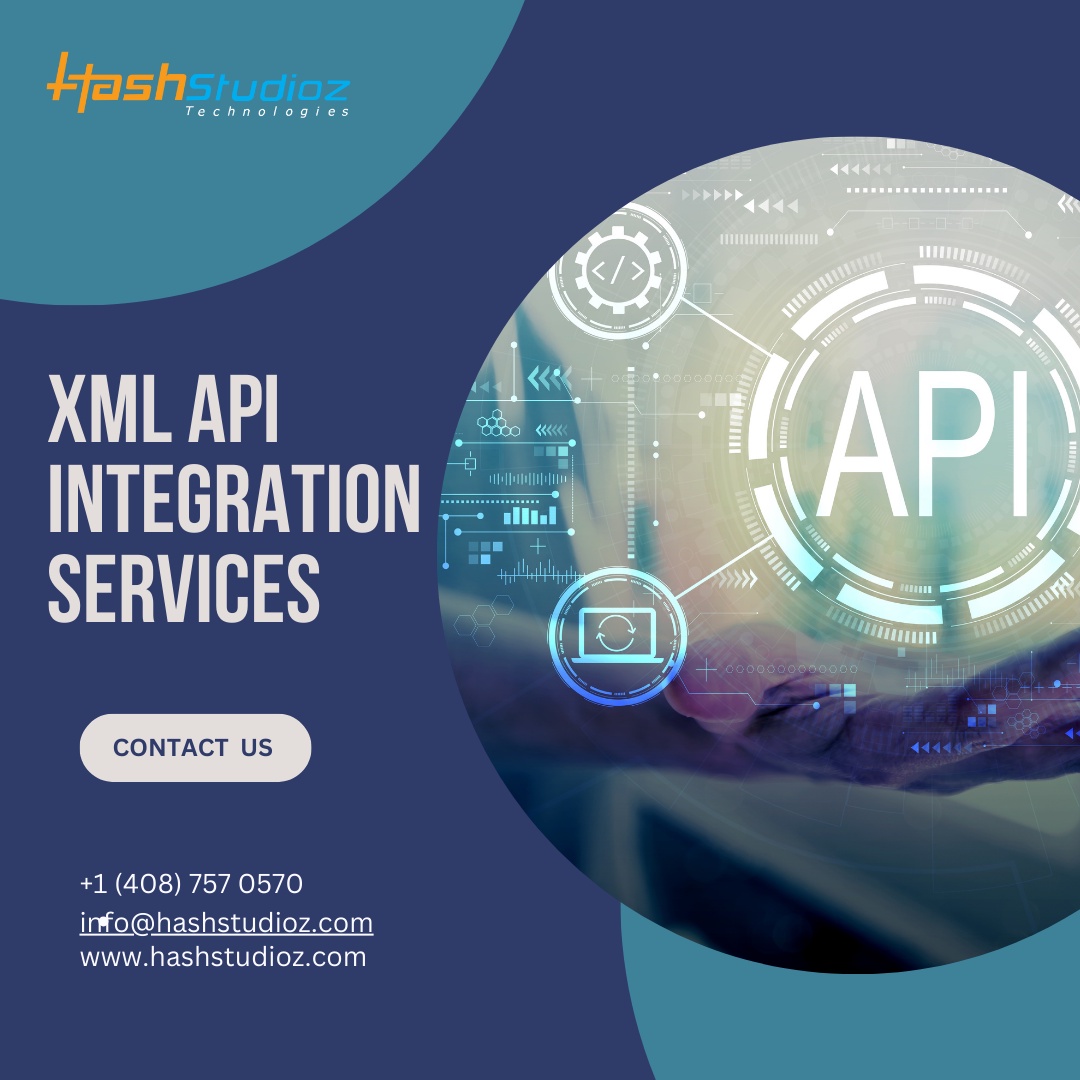Improving user experience (UX) is still one of the major objectives for companies and developers in the dynamic digital world. As 2024 approaches, it will be more important than ever to employ technology to deliver smooth, effective, and customized customer experiences. In this technological transformation, XML API integrations are leading the way with reliable solutions that improve interconnectivity, simplify data interchange, and increase customer happiness. This in-depth study explores the advantages, implementation techniques, and potential applications of XML API integrations to improve the user experience in 2024.
Understanding XML APIs
What is XML?
XML (Extensible Markup Language) is a versatile markup language designed to store and transport data. Unlike HTML, which is primarily used for displaying data, XML focuses on data interchange. It allows developers to define their own tags, making it flexible for various applications.
What are APIs?
APIs (Application Programming Interfaces) are sets of rules and protocols that enable different software applications to communicate with each other. APIs facilitate the integration of new features into existing applications, allowing for enhanced functionality without the need for extensive redevelopment.
The Role of XML in APIs
XML APIs use XML as the format for data exchange between applications. This standardization allows for consistent data formatting, making it easier to parse and manipulate the data across different platforms and programming languages. XML’s structured nature ensures that data integrity is maintained during transmission, which is crucial for reliable integrations.
Benefits of XML API Integrations
Improved Data Interoperability: One of the primary benefits of XML API integrations is improved data interoperability. By using a standardized format, XML APIs enable seamless data exchange between disparate systems. This interoperability ensures that data from various sources can be aggregated, analyzed, and utilized without compatibility issues, leading to more cohesive and comprehensive user experiences.
Enhanced Flexibility and Scalability: XML’s extensible nature allows developers to define custom tags and structures, providing the flexibility to adapt to specific business needs. This adaptability is crucial for scaling applications, as it allows for easy modification and expansion of data structures without disrupting existing systems.
Streamlined Development Processes: XML API integrations can significantly streamline development processes. By providing a clear and consistent format for data exchange, developers can reduce the time and effort required for coding and debugging. This efficiency translates into faster deployment times and reduced development costs, enabling businesses to deliver new features and improvements more rapidly.
Improved Data Accuracy and Consistency: Data accuracy and consistency are paramount for delivering a superior user experience. XML APIs ensure that data is transmitted in a standardized format, reducing the risk of errors and inconsistencies. This reliability is essential for applications that rely on precise data, such as financial services, healthcare, and e-commerce platforms.
Enhancing User Experience with XML API Integrations
-
Personalization and Customization
Personalized Content Delivery: XML APIs can be leveraged to deliver personalized content to users based on their preferences and behaviors. By integrating with user data repositories, XML APIs can dynamically generate and deliver tailored content, such as product recommendations, personalized news feeds, and targeted advertisements. This level of personalization enhances user engagement and satisfaction.
Customizable User Interfaces: XML’s flexible structure allows for the creation of customizable user interfaces. Developers can design UI components that can be easily modified and extended using XML configurations. This capability enables businesses to offer users the ability to customize their interfaces according to their preferences, leading to a more personalized and engaging experience.
-
Enhanced Connectivity and Integration
Seamless Integration with Third-Party Services: XML APIs facilitate seamless integration with third-party services, such as payment gateways, social media platforms, and analytics tools. This connectivity enhances the functionality of applications, allowing users to perform a wide range of actions without leaving the application. For instance, an e-commerce platform can integrate with various payment providers, giving users multiple payment options and a smoother checkout process.
Cross-Platform Compatibility: XML APIs ensure that applications can communicate and share data across different platforms and devices. This cross-platform compatibility is crucial in today’s multi-device environment, where users expect consistent experiences across desktops, tablets, and smartphones. XML’s standardized format ensures that data is consistently presented, regardless of the device or operating system.
-
Real-Time Data Access and Synchronization
Real-Time Updates: XML APIs enable real-time data access and updates, which are essential for applications that require up-to-the-minute information. For example, in financial trading platforms, real-time data feeds are critical for making informed trading decisions. XML APIs ensure that data is transmitted quickly and reliably, providing users with the most current information available.
Data Synchronization Across Devices: With the proliferation of multiple devices, data synchronization has become increasingly important. XML APIs can synchronize data across various devices, ensuring that users have access to the latest information regardless of the device they are using. This capability is particularly valuable for applications like calendars, task managers, and collaborative tools, where up-to-date information is crucial for productivity.
Implementing XML API Integrations
-
Best Practices for XML API Development
Designing Efficient XML Schemas: An efficient XML schema is essential for successful XML API integration. The schema should be designed to be both comprehensive and lightweight, ensuring that it can handle the required data while minimizing unnecessary overhead. Proper schema design improves performance and makes the API easier to use and maintain.
Ensuring Security and Privacy: Security is a critical consideration for XML API integrations. Developers must implement robust security measures to protect data during transmission, such as encryption and secure authentication protocols. Additionally, privacy regulations, such as GDPR and CCPA, must be adhered to, ensuring that user data is handled responsibly.
Comprehensive Documentation: Comprehensive documentation is vital for the successful implementation and adoption of XML APIs. Documentation should include detailed descriptions of the API’s functionality, usage examples, and error handling procedures. Well-documented APIs facilitate easier integration and troubleshooting for developers.
-
Overcoming Common Challenges
Handling Large XML Data Sets: One of the challenges of XML API integrations is handling large data sets, which can lead to performance issues. To mitigate this, developers can implement techniques such as data compression, pagination, and selective data retrieval to optimize performance and reduce latency.
Ensuring Backward Compatibility: Maintaining backward compatibility is crucial for ensuring that updates to XML APIs do not disrupt existing integrations. Developers should follow versioning best practices and provide clear migration paths for users of the API. This approach minimizes the risk of breaking changes and ensures a smooth transition for users.
Successful XML API Integrations
-
E-Commerce Platform Enhancement
Improved Product Recommendations: An e-commerce platform integrated XML APIs to enhance its product recommendation engine. By leveraging user data and purchase history, the platform delivered personalized product suggestions to users in real-time. This integration resulted in increased user engagement and higher conversion rates, demonstrating the power of personalized content delivery.
Seamless Payment Processing: The same e-commerce platform integrated XML APIs with multiple payment gateways, providing users with a variety of payment options. This seamless integration improved the checkout experience, reduced cart abandonment rates, and boosted overall sales.
-
Healthcare Application
Real-Time Patient Data Access: A healthcare application used XML APIs to enable real-time access to patient data from various sources, such as electronic health records (EHR) and lab results. This integration allowed healthcare providers to have a comprehensive view of a patient’s health status, leading to more informed decision-making and improved patient outcomes.
Secure Data Transmission: The healthcare application implemented robust security measures for XML API integrations, ensuring that sensitive patient data was transmitted securely. This adherence to security protocols helped the application comply with healthcare regulations, such as HIPAA, and maintained patient trust.
-
Financial Services
Real-Time Market Data: A financial services firm integrated XML APIs to provide real-time market data to its trading platform. This integration allowed traders to access the latest market information and execute trades based on current data. The real-time updates enhanced the trading experience and improved the firm’s competitive edge.
Enhanced Reporting and Analytics: The financial services firm also used XML APIs to integrate with various analytics tools, providing users with detailed reports and insights. This integration enabled users to make data-driven decisions, enhancing their overall experience with the platform.
Future Prospects of XML API Integrations
-
Advancements in AI and Machine Learning
Enhanced Personalization: As AI and machine learning technologies advance, XML API integrations will play a crucial role in delivering enhanced personalization. By leveraging AI algorithms, XML APIs can provide even more accurate and relevant content recommendations, predictive analytics, and personalized user experiences.
Intelligent Data Processing: AI and machine learning can also improve the efficiency of XML API integrations by automating data processing tasks. This capability will allow applications to handle larger data sets and more complex data structures, enhancing overall performance and user experience.
-
Increased Adoption of IoT
Seamless Device Connectivity: The Internet of Things (IoT) is expected to continue its rapid growth, with more devices becoming interconnected. XML API integrations will be essential for ensuring seamless connectivity and data exchange between IoT devices. This integration will enable users to control and monitor their devices more effectively, leading to improved convenience and user satisfaction.
Real-Time Data Monitoring: IoT applications often require real-time data monitoring and analysis. XML APIs can facilitate real-time data transmission between IoT devices and central systems, enabling timely responses and actions. This capability is particularly valuable in sectors such as healthcare, manufacturing, and smart home technology.
-
Evolving Regulatory Landscape
Compliance with Data Privacy Regulations: As data privacy regulations continue to evolve, XML API integrations will need to adapt to ensure compliance. Developers will need to implement robust security measures and privacy controls to protect user data and comply with regulations such as GDPR, CCPA, and future legislation.
Enhanced Security Protocols: The increasing focus on data security will drive the development of enhanced security protocols for XML API integrations. These protocols will include advanced encryption techniques, secure authentication methods, and continuous monitoring to protect against emerging threats.
Conclusion
In conclusion, XML API integrations represent a powerful tool for businesses seeking to elevate user experience in 2024 and beyond. By enabling seamless data exchange, personalized interactions, and real-time connectivity, XML APIs empower organizations to deliver superior products and services that meet the evolving demands of users in the digital age.


No comments yet